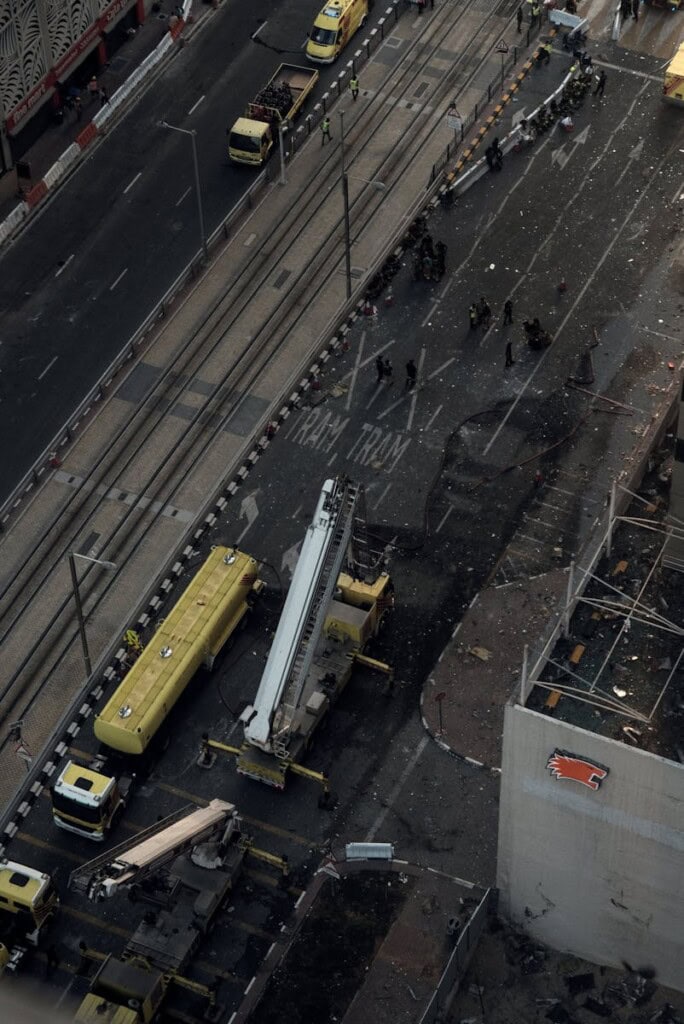
Truck accidents have severe implications on all those involved. Being aware of the kind of evidence needed makes the legal case stronger. The different types of proof bring with them the additional level of detail that will demonstrate what happened prior to, at, and after the crash.
Assembling the proper documents and information shortly after the incident can go a long way. The better and detailed the case file is, the easier it becomes to bring out a picture. Anyone looking for more information about truck accident cases needs to have a thorough knowledge of the most important forms of evidence.
Every accident scene contains potential clues. From damaged vehicles to witness accounts, every detail may contribute to the larger story. A careful review of the most relevant evidence helps strengthen the process from the very beginning.
Police Reports Show Immediate Details
When officers are responding to a crash, they generate a report containing what they observed and statements taken. Such reports will usually contain diagrams, measurements, and notes which give a general overview. An official report often serves as a foundational document when reviewing the sequence of events.
The police report might also indicate any violations of traffic law. A copy of the report can typically be requested through the responding agency’s traffic division. Statements from those at the scene are often recorded in these reports. These include comments from drivers, passengers, and any witnesses nearby. Capturing those statements early ensures they are preserved before memories begin to fade.
Photos and Videos Provide Visual Proof
Images taken after a truck crash capture critical evidence like vehicle placement, skid marks, and road conditions. When possible, taking photos from several angles adds important context. In some cases, the crash can be displayed in video footage acquired in dashcams or other surrounding cameras.
These visuals help clarify what written reports alone may not capture. Visual evidence can be used to support or refute statements of the involved parties. Traffic signs, weather conditions, or other reasons for the incident that took place can be presented in photos as well.
Videos and images, which have time stamps, come in handy when checking on the timeline. Paired with other information, these visuals help piece together the full event. Stored properly, they can remain valuable throughout the duration of a legal process.
Eyewitness Reports Provide Discriminating Information
Important viewpoints can be offered by eyewitnesses who happened to see the crash. They can provide details that may have been omitted by the people implicated in the accident. Objective observers sometimes recall vehicle speed, behavior, or lane changes that add depth to the case.
Statements need to be taken as early as possible when the memories are fresh. Witnesses may either provide a verbal record or a written summary of information that may be incorporated into the case file. When duly recorded, their input can be used to enlighten the areas of time disagreements.
Legal teams may follow up with these witnesses for further clarification. In some cases, a formal deposition could be taken if the case proceeds further. Each witness adds a layer of support for the events described in the other evidence.
Medical Documentation Tracks the Injury Path
Medical records carry the narration of the physical impact of an accident on the individuals. Whether it is emergency care or rehabilitation, all stages in the treatment generate an elaborated image. Treatment records can also reveal long-term needs or complications. The timing of these visits and the severity of reported injuries help support claims.
These records are essential when calculating potential losses or ongoing care requirements. Photographs of injuries, diagnosis notes, and recovery plans form a full view of the medical response. This evidence is especially useful when evaluating how the crash impacted someone’s daily life.
Driver and Company Records Give Operational Context
Truck drivers are responsible for maintaining records of their driving hours and rest duration. These logs help verify whether a proper rest was involved prior to the crash. This information can be reviewed to determine whether fatigue might have contributed.
Additional knowledge is provided through company records, training records, and maintenance schedules. Through these documents, it is possible to verify the last time the vehicle was repaired or checked. In case some patterns are identified, they are to be included in a bigger picture of the case.
Relevant operational files include:
- Driving logs
- Inspection checklists
- Maintenance records
- Driver certification or training files
- Dispatch notes or schedules
Electronic Data Creates a Precise Timeline
Many commercial trucks are equipped with data systems that record driving behavior. These systems track acceleration, braking, and speed in the moments before a crash. Black box data often includes valuable second-by-second updates. It offers a level of detail that helps pinpoint the cause of the accident.
This data supports or challenges other sources such as witness statements or physical evidence. Care must be taken to ensure this data is properly preserved. In many cases, legal teams request that the trucking company protect and share these records quickly. Timing plays a crucial role in securing full electronic documentation.
Experts Help Reconstruct the Full Picture
Accident reconstruction experts analyze the physical evidence to develop an objective review. These professionals examine vehicle damage, road marks, and measurements. Their goal is to recreate the likely sequence of events based on factual input. Their analysis may include speed estimates, impact force, and vehicle paths. The reconstruction helps explain aspects of the crash that are not immediately clear.
In addition to crash scene specialists, other professionals may assist. Medical experts, engineers, or commercial transport specialists may all provide useful opinions. Their input enhances the overall presentation of the case when needed.
A Legal Support Will Help to Reinforce Your Case
Laws involving truck accidents are extremely technical, and it can be beneficial to work with professionals in this field. They know what to preserve in a quick manner, such as driver logs, black box information, and other maintenance records that may otherwise prove elusive. Their expertise serves to make sure that no significant point of information is overlooked along the way.
Legal teams that have been involved in this aspect also understand how to build a case with the best evidence possible. They will be able to liaise with professional prospectors, communicate with insurance providers, and stay on top of everything. This type of support enables individuals to concentrate on recovery without worrying about the way their case is handled in detail.
More information can be discovered through police report investigation, digital data, medical history, and witness statements. The strength of any kind of evidence is in the way it links the details to a single coherent narrative. All stages of the case, including initial review and possible legal proceedings, should be supported by strong evidence.

